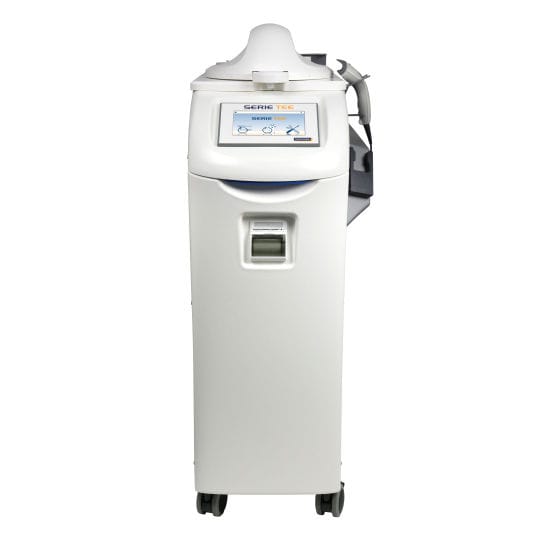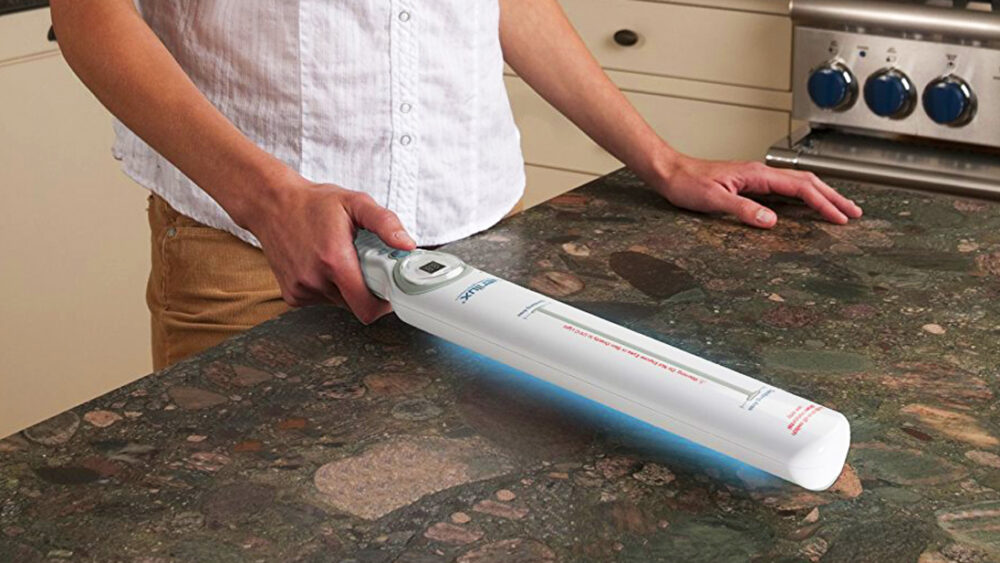UV Sanitizer -- Does UV Light Kill Germs
2021-02-25 by hqt
How Does UV Sanitizer Help Kill Gems
UV light stands for ultraviolet light and it’s a form of radiation. It contains more energy as compared to visible light or radio waves. However, it contains a smaller amount of energy than gamma rays or X-rays. You can expose yourself to ultraviolet light via manmade sources (i.e. tanning beds) or natural sunlight. The ultraviolet light can kill germs, such as viruses and bacteria. This is why most UV sanitizer companies claim that their products can kill the new COVID-19 virus. But, is it true or just a myth? Do the ultraviolet sanitizers safeguard you from this new SARS-CoV-2 family virus?
UV Sanitizer and COVID-19
Before we discuss ultraviolet sanitizers and their effects, it is important to talk about UV light. There are many UV light types. They are categorized as per their energy levels. Here are the different types of ultraviolet lights you need to know:
UVA Light: This type contains the lowest energy amount. The direct sunlight that you go through outside is the UVA light. This exposure can cause skin damage and skin aging.
UVB Light: This UV light type has a moderate level of the energy continuum. A little amount of sunlight holds UVB light. This is the main UV light type that adds to the sunburns. This is the light that causes skin cancers.
UVC Light: This ultraviolet light holds the most amount of energy that is engrossed in the ozone of the Earth. Therefore, you do not have exposure to this light daily. Though, there are many manmade UVC light sources.
When it comes to killing germs, the most effective type of ultraviolet light among all three types is the UVC light. This light is best at disinfecting air, liquids, and surfaces. It kills viruses by damaging molecules, such as proteins and nucleic. This process takes away the survival capabilities of the germs.
UVC Light and Coronavirus
Coronavirus can be killed by the UVC light along with other viruses and germs. This is why manufacturers claim that a UV sanitizer is effective in killing viruses, such as COVID-19. Let’s see what research has revealed about the relation between UVC light and coronavirus.
Disinfecting Liquids
A recent AJIC study investigated the use of UVC light for killing COVID-19 in liquid cultures. The results revealed that exposure to UVC light inactivated the coronavirus completely within 9 minutes.
Disinfecting Surfaces
Another AJIC study analyzed the use of specific UVC light types for killing coronavirus on laboratory surfaces. The results showed a 99.7% decrease in the virus within just 30 seconds. Therefore, this was another proof in favor of the UV sanitizer. The UVC light type used in the study was far-UVC light. This is the light amid wavelengths of 207-222 nanometers. Far-UVC damages germs, but a little hazardous to the eyes and skin.
Disinfecting Air
One Journal Scientific study report revealed that far-UVC kills a couple of coronavirus types by disinfecting the air. These coronavirus types are OC43 and 229E. According to the researchers, far-UVC can kill 99.9% of airborne coronaviruses within just 25 minutes.
The UVC light has become a smart disinfection option as it doesn’t use chemicals. Special lamps are used that release UVC light. At the moment, UVC light is used to disinfect mostly in the healthcare facilities for disinfecting operation rooms, PPE, equipment, and surfaces. You will commonly see a UV sanitizer placed at all healthcare facilities.
Possible Downsides of UVC Light
UVC light can be fully helpful if you have direct contact with it. If there is no direct contact, then it would not be offering the full advantage. Therefore, if the area is under shadow or covered with dust, it will not be very effective in terms of killing germs. However, this doesn’t relate to a UV sanitizer. UVC light kills SARS-CoV-2 very quickly, but the FDA has also noticed a few risks, such as:
- The optimal exposure length, dose, and length of the UVC light to kill the coronavirus is not yet determined.
- Exposure to UVC light types can damage eyes or skin.
- UVC specialized lamps often have lower intensity, which means they may take so long to kill viruses.
- There is a possibility that long UVC light exposure may degrade some materials, like plastics, polymers, or textiles.
Far-UVC is likely a safer disinfection option. According to researchers, this light doesn’t penetrate the eye or skin’s other layers.
Developing Technologies
Different companies are developing new UVC disinfection technologies. These technologies aim at the automation of the disinfection process with the help of robots. LightStrike robotTrustes Source is one instance that can eliminate 99.99% of coronavirus viral particles within 2 minutes. It is a possibility that robots might be disinfecting hotel rooms, airplanes, and hospital rooms in the coming years.
Myths about UV Light
You should know about the coronavirus killing methods with the help of UV light or other procedures, such as a UV sanitizer. However, there are still some myths about UV light that must be addressed. Here are a few popular myths that you should go through:
1. A Hand Dryer’s Hot Air Can Kill Coronavirus
Hand dryers emit hot air, but it does not kill the virus that might be present on the hands. The right way to disinfect your hands is to wash your hands thoroughly with a UV sanitizer or soap. There are many other ways that you can adapt to prevent COVID-19. Here are a few useful tips that you can follow to stay safe:
- Spend maximum time at your home. If there is urgent work for which you want to go out, you should consider physical distancing. Cover your face with a face mask and do not go in the large gatherings.
- Frequently wash hands with warm water and soap or a hand sanitizer. Do not touch your mouth, nose, or face.
- Disinfect frequently-touched areas regularly in the home, like appliance handles, counterparts, and doorknobs. Consider disinfection products listed by the EPA for effective results.
It is also advised not to go around sick people and stay home if you are ill.
2. Sun Exposure Protects from COVID-19
Sunlight has UV light and it is mostly UVB and UVA light. These lights are normally less effective in killing coronavirus. Perhaps, long exposure may also cause sunburn, skin damage, and at its worst skin cancer. Therefore, there is no proof of sunlight protecting humans from COVID-19.
3. UV Lamps Protect From COVID-19
UV lamps may be a good option for disinfecting surfaces. But, you cannot use them to kill the COVID-19 on your hands or some other body parts. Keep in mind that some UV light types may be damaging to people. This exposure may cause skin burns, damage, and irritation.
4. Hot Bath Prevents COVID-19
Some say that taking a hot bath prevents the coronavirus. However, this method is not going to protect you from the virus. The body temperature remains the same while taking the hot bath. In addition to that, an extremely hot bath may harm you in terms of scalding and burning.
Bottom Line
UVC light is the most effective ultraviolet light type to kill germs, such as bacteria and viruses. It can kill SARS-CoV-2 that causes the new coronavirus COVID-19. According to different researches, far-UVC light is the most effective UV light type that kills germs and has the least chances of producing any harm to humans. If you want to stay safe and healthy, you should consider washing your hands regularly with UV sanitizer, stay home, and practice social distancing.
For More Information, Contact Us Today!



